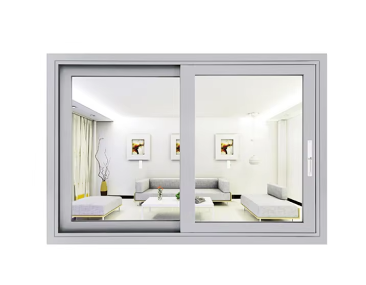Foydalar va turlari Surishuv janzolar
Kechiruvchi oynalarining asosiy foydalar
Silliq oynalar juda ko'p afzalliklarga ega bo'lib, bugungi kunda ko'plab uy egalari ularni yaxshi ko'radilar. Ular xonani yaxshi havolantirish imkonini beradi, chunki ularning tuzilishi tufayli xonaga ko'proq yangi havo kiradi. Bu oynalar shuningdek, oddiy oynalarga qaraganda kamroq devor maydonini egallaganligi sababli, tor joylarda ham yaxshi ishlaydi. Energiya tejash sohasida esa, ko'pincha ikki yoki uch qavatli shishalardan tashkil topgan bo'lib, sovuqni ushlab turadi va qish faslida isitish xarajatlari qisqaradi. Yana bir afzallik esa, silliq oynalarda kamroq ishlaydigan qismlar bo'lgani uchun ularni ta'mirlash osonroq. Shuningdek, go'zal manzarani esga olsak, katta shisha panellari tashqi tomondan ochiq ko'rinishni taqdim etadi va ichki fazoga ko'proq quyosh nuri kirishiga imkon beradi, xonalarni yorqinroq va mehmonqahharoq qiladi.
Umumiy sur'at Tovuq Stiller
Sur'atlangan zarlarning bir nechta mashhur stilklari mavjud, har biri arxitektura zaruriyatlariga va tanlovlarga mos keladi.
- Bitta sur'atli oynali sandali : Ushbu modda, boshqa biri sabit qolayotgan vaqtda birinchi sur'at horizantal ravishda harakatlanadi, bu standart ishlatilish uchun klassik va oddiy dizayn taklif etadi.
- Ikki to'g'ridon chala oynalar : Ikki sur'at ham ochilishi mumkin bo'ladi, bu esa yaxshi ventilyatsiya variantlarini va tozalashga arzon kirishni ta'minlaydi.
- Turtma Surishuv janzolar : Ular turli xil to'g'ach joylariga mos keladi, ikki steklodan iborat ekranlarni birlashtirib, shu bilan foydalanuvchilarga muhitning eng juda ko'rinishlarini beradi va nur maximallashtiriladi.
- Vertikal ravishda sur'at beruvchi oynalar : Bu qulayliklar vertikal ravishda pastga va yuqoriga surinadi, horizontalliklardan farqli bo'lib, eng ko'p klassik uy tuzilmalari uchun ishlatiladi va muqobil sovrimlarga erkin funksionallik bilan turli xil asosiy stilga ega.
- Chalg'ilgan Oynalar Muvoqiya Qarshi : Ushbu oynalar shiddatli ob-havo sharoitida muvaffaqiyatli ishlay oladi va ushbu mintaqa bo'yicha ijodiy stilni buzmasdan ximoyalangan qo'l-katta himoya ta'minlaydi.
Turli uslublardan tanlash mumkin bo'lgani uchun quyilma oynalar funksional talablarga hamda shaxsiy mazza-mulohazalarga mos keladigan qilib sozlanishi mumkin, shu bilan birga dizayn va energiya tejash xususiyatingizga mos keladi uy .
Oldindan O'rnatishni Rejalashtirish va Hajm Birlashtrish
To'g'ri sur'atlanuvchi oynalar usuli tanlashi
Suzuvchi oynalarni tanlash uchun uyning umumiy uslubiga qanday qarash kerakligini o'ylash kerak. Kolonial uy, ehtimol, zamonaviy me'morchilikdan boshqasini xohlaydi. Qaror qabul qilishdan oldin oynalarning mavjud dizayn elementlariga qanday mos kelishini yaxshilab ko'rish kerak. Shish turlari va materiallarni tanlashda iqlim ham muhim ahamiyatga ega, chunki ekstremal ob-havo sharoitlari energiya sarfiyotlariga uzoq muddatli ta'sir qiladi. Oynalar haqida barcha narsani biladigan mutaxassislardan maslahat so'rash funksional hamda vizual jihatdan mos keluvchi variantlarni aniqlashga yordam beradi. Ba'zi tumanlarda oynalarning o'lchamlari va materiallari bo'yicha qat'iy qoidalari bor, shu sababli dastlab shu me'yorida tekshirishni amalga oshirish kerak. Vinil, Alyuminiy yoki yog'och - har biri o'zining afzalliklari va kamchiliklariga ega bo'lib, ularning xizmat muddati, saqlash talablari hamda narxiga bog'liq. Ko'pincha uy egasi o'zining xohishlari bilan moliyaviy jihatdan to'g'ri keluvchi yechimlar orasida muvozanat o'rnatadi.
Aniq o'lchov usullari
Yaxshi o'lchov olish — oynaning o'rnatish ishlarini muvaffaqiyatli bajarish yoki bosh harf bilan boshlanuvchi muammolarga sabab bo'lishi mumkin. Avval ishonchli o'lchov lentasini oling va biz ishlayotgan taxminiy ochilish o'lchamlarini tekshiring: kenglik, balandlik, chuqurlik ham kiradi. Shuningdek, devorlar hozirgi kunda doim mukammal to'g'ri bo'lmaganligi sababli, faqat bitta joyga e'tibor qaratmang. Ramka o'lchamlarini ko'rib chiqayotganda, oynaning qanday turini o'rnatmoqchi bo'lganingizga qarab, ehtimol o'zgartirishlar kerak bo'lishi mumkinligini esda tuting. Barcha narsani xavfsiz joyga yozib qo'ying, shunda keyinchalik barcha oyna variantlarini ko'rib chiqayotganda hech narsa aralashib ketmaydi. Agar maxsus oynalar o'rniga standart o'lchamdagi oynalarni tanlasangiz, savdo nashrlari tavsiya qilayotganlari nimaligini ko'rib chiqing. Bu esa uzoq muddatli davrda pul tejashga yordam beradi va shu bilan birga mos keluvchi narsani olishingizni ta'minlaydi.
Yangi qurilish va almashtirish o'rnatishining farqi
Yangi qurilish yoki qayta jihozlash o'rnatishini tanlashda hisobga olinadigan ko'plab narsalar mavjud. Nol dan boshlab narsa qurish, qoida tariqasida, shablon ishlari va konstruksion tayanchlar bilan shug'ullanishni anglatadi, bu esa aniq ravishda dastlabki xarajatlarni oshiradi. Lekin yaxshi tomoni shundaki, ushbu yondashuv quruvchilarga dizayn tanlovi sohasida ancha mos ravishda moslashish imkonini beradi. Mavjud inshootlarni qayta jihozlash, umuman olganda, mavjud narsalarga katta o'zgarishlar kiritish shart emasligi sababli sodda bo'ladi. Aksariyat odamlar bu loyihalarning ham tezroq tugashini, shuningdek, qisqa muddatli jihatdan umuman kamroq pul talab qilishini aytadilar. Tanlashdan oldin vaziyatga eng mos keladigan narsani tekshirib ko'ring. Mahalliy qurilish tartiblari bu sohada juda muhim o'rin tutadi. Yangi qurilishlar deyarli doim ruxsatnomalarni talab qiladi, boshqa tomondan, ko'plab qayta jihozlashlar minimal hujjatlarni talab qiladi. Hozirgi shart-sharoitlarni, masalan, izolyatsiya qanchalik yaxshi ekanligini yoki inshootda ob-havo shartlariga qarshilik ko'rsatish yetarli ekanligini tekshirib ko'rishni unutmang. Bunday tafsilotlar ishni amalga oshirish uchun qaysi o'rnatish maqbul ekanligini aniqlashda katta farq yaratishi mumkin.
Orqa tarafdagi oynani bosib surish jarayoni
Oyna ochamchisini tayyorlash
Suzuvchi oynani o'rnatishda dastlab oyna ochilishini tayyorlash kerak. O'rnatish jarayonida to'siq bo'lishi mumkin bo'lgan eski narsalarni olib tashlang va u yerga yig'ilgan axlatni tozalab bering. Shuningdek, shinish yoki namlikdan kelib chiqqan nosozlik kabi shikastlanish belgilarini ham tekshirib oling - chunki bu xavfli nuqtalar oynani o'rnatishni qiyinlashtirishi mumkin. Ochilish to'g'ri burchakli ekanligini tekshirish uchun daraja asbobi yordamida tekshiring, chunki hatto kichik chetlanish ham oynaning noto'g'ri ishlashiga sabab bo'ladi. Ro'likni o'rnatayotganda uni to'g'ri va barqaror qilib turish uchun kichik yog'och qismlardan - shimlardan foydalaning. Shuningdek, suv tashqi tomondan ichiga kirib ketmasligi uchun germetik silik va boshqa to'siqlar ham muhim ahamiyatga ega ekanini unutmang.
Flash va havodan himoyalashni qo'llash
Oynalarni o'rnatishda ishlov berishni to'g'ri bajarish namlik muammosini oldini olishning kalitidir. Ishlov berish uchun oyna ramkasi atrofida uch tomoni va pastki qismi hamda yomg'ir odatda kirib ketadigan joylarda sifatli suvga chidamli lentadan foydalanish kerak. Ishlov berishning asosiy maqsadi oynadan namlikni faqat yopish emas, balki uzoqlashtirishdir. Shuningdek, havo shturchasini ham unutmang, chunki u ramka atrofida havo kirishini oldini oladi. Agar imkon bo'lsa, pastda to'g'ri eshik tagi panellarini o'rnatish ham foydalidir. Bular boshqa barcha narsalardan o'tib qolgan suvni yig'ib, poydevorga zarar yetkazish o'rniga xavfsiz joyga o'tkazadi.
Oynani chiqish va sathlanish
Har qanday siljish oynasini to'g'ri o'rnatish uchun tafsilotlarga e'tibor qaratish kerak. Avval oynani ochilish joyiga qo'yib, u tekis turibdiganini tekshiring. Narsalarni sozlash kerakmi? Hech narsa mahkamlanishidan oldin hamma narsani to'g'ri tekislash uchun shimlar ajoyib natija beradi. To'g'ri joylashtirilgandan so'ng, sharnirlarni ramkaga mahkamlab qo'ying, lekin ularni juda qattiq tortib yuborish kerak emas, chunki bu ularni chiqarib yuborishga olib keladi. Butun narsa o'z joyida qolishiga qadar zichlik yetarli bo'lishi kerak. Mahkamlab bo'lgandan keyin, bosim qo'llanilganda narsalar siljishida oyna hali ham tekis turibdiganini ikki marta tekshiring. Keyingi qadam esa yon tomonlarga devorpanellar qo'shish hamda shamollar o'tkazmaydigan zich birlashma hosil qiluvchi boshqa yakuniy ishlarni bajarishdan iborat. Barcha ishlarni tugatish uchun hamma narsani yana bir bor tekshirib chiqing. Oynani bir necha marta oching va yoping, chunki u hech qayerga qaramasdan silliq harakat qilishini tekshirish kerak. Shuningdek, bir necha kundan keyin harorat o'zgarishlari hamma narsaning qanchalik zich joylashishiga ta'sir qilishini hisobga olib, shishaning ramkaga tushgan joyidagi bo'shliqlarni ham tekshiring.
Uzoq davom etadigan ish uchun reguliar texnik joriy holat
Yollar tozalash va rollar smazochnika
Oynaning dastasini va valiklarni tozalab turish hamda ularni muntazam ravishda moylab turish orqali oynani silliq siljitish imkonini beradi. Vaqt o'tishi bilan dastalarda loy va axlat to'planadi, shu sababli muntazam ravishda changyutgich yoki nam gazlama bilan tozalash kerak. Kuchli kimyoviy tozalagichlardan foydalanishdan saqlaning, chunki ular oynaning dastasini tashkil qiluvchi materiallarni vayron qilishi mumkin. Siljish jarayonini yaxshilash uchun shisha asosli moydan foydalaning yoki maxsus maqsadga mos sifatli spreyni tanlang. Shuningdek, valiklarni ham muntazam tekshirib turing. Agar ular yarilgan yoki eskirgan bo'lsa, siljish jarayonida muammo yuzaga kelishidan oldin almashtirib qo'yish kerak. Shopol, changli hududlarda yashaydiganlar esa oynalarni har yili muntazam ravishda tozalab turish orqali ularning ishlashi uchun doimgilikka e'tibor qaratishlari kerak.
Sigillarni va ob-havo qo'shimchalari tekshirish
Suyuvchi oynalarning zichlagichlarini va havo izolyatsiyasini tekshirish ularning samaradorligini saqlab qolish va ularni uzoq muddat foydalanish uchun muhim ahamiyatga ega. Oynaning ramkasi atrofini material eskirgan yoki o'rnidan chiqib ketgan belgilarni topish uchun muntazam tekshirib turing. Bu esa qishda issiqlikni yo'qotishni va yozda sovuq havo kirishini oldini olishga yordam beradi. Kuchli bo'ronlardan keyin zichlagichlar hali ham to'g'ri ishlayotganini tekshirish ayniqsa muhimdir. Agar qismlar shikastlangan bo'lsa, yangi havo izolyatsiyasini o'rnatsa, uyning issiqlik izolyatsiyasi saqlanadi va havo kirishini oldini olish mumkin. Ba'zi uy egalari havo izolyatsiyasini sozlanuvchi qilishni afzal ko'radilar, chunki ularniq muddat o'tishi bilan sozlashingiz mumkin. Shuningdek, rezina zichlagichlarni muntazam tozalashni ham unutmang. Oddiygina texnik xizmat ko'rsatish ularni yillar davomida emas, balki faqatgina oylar davomida foydali bo'lishini kafolatlaydi. Suyuvchi oynalarni shu tarzda ta'minlab tursak, ular o'z vazifasini yaxshi bajaradi va uyga shamol, yomg'ir hamda haroratning ekstremal sharoitlaridan yaxshi himoya beradi.
Sildiruvchi oynalarda yashirin muammolarni hal qilish
Chalgan yoki bloklangan panelni hal qilish
Suzuvchi oynalar odatda o'z yo'nalishlariga nima-ning qarama-qarshi turib qolsa, qotib qoladi. Mazkur yo'nalishlarni muntazam tekshirib turish kerak va chang yoki ifloslanishlarni yig'ish uchun yaxshi sochiq yoki yumshoq gazlama bilan tozalang. Bunday oddiy texnik xizmat ko'rsatish oynaning yaxshi ishlashini uzun muddatli saqlashga yordam beradi. Oynaning g'ildirama qismlarini ham tekshirishni unutmang, chunki agar ular eskirgan yoki shikastlangan bo'lsa, oynaning yaxshi siljishiga salbiy ta'sir qiladi. Agar kerak bo'lsa, yomon g'ildirama qismlarni almashtirish orqali muammoni butunlay hal qiling. Yo'nalishlar va g'ildirama qismlarga to'g'ridan-to'g'ri qo'llaniladigan silipli moyalovchi vosita ishlashni yengillashtirishda katta farq yaratadi hamda keyingi muammolarni oldini oladi. Shuningdek, oynaning o'zi ramkaga to'g'ri joylashganligini tekshirib turing. Agar oyna mukammal tekislanmagan bo'lsa, bu yo'nalish tizimiga vaqt o'tishi bilan shikast yetkazib, oynaning qotib qolishiga sabab bo'ladi.
Tuziqchalar va havaliyliklarni to'g'irlash
Surma oynalardan kirayotgan shamoldan qutulish uchun avval uning qayerdan kirayotganini aniqlab oling. Ba'zida oynani ko'rib tushunish ham qiyin bo'ladi, lekin boshqa vaqtlarda muayyan joylarni aniqlash uchun chang qilish sinovlaridan foydalaniladi. Eng ko'p uchraydigan sabab — oynaning chetlaridagi havo izolyatsiyasi yoki yo'qolgan rezina lentalar. Bu lentalar muntazam tekshirilishi kerak, chunki ular shikastlanib qolsa yoki butunlay yo'qolsa, sovuq havo bevosita kirib keladi. Agar ramkada bo'sh joylar ko'rinayotgan bo'lsa, yaxshi sifatli germetik vositani olish maqsadga muvofiqdir. Shuningdek, oynaning o'z ramkasi vaqt o'tishi bilan egilgan yoki noto'g'ri o'rnatilgan bo'lishi ham tekshirilishi kerak. Bunday hollarda ramka bilan devor orasida shamol o'tib ketadigan maydonlar vujudga keladi. Xavfsizlik uchun yana bir variant — yaxshi issiqlikni saqlovchi zonalar. Ular qo'shimcha to'siq vazifasini bajaradi va kun davomida yorug'lik o'tkazadi.
Suv kirishini oldini olish
Silliq oynalar siz ularni to'g'ri boshqarsangiz oqib ketmaydi. Ramkaning atrofidagi foykalangan lentalarni tekshiring va ob-havo izolyatsiyasi to'g'ri ishlamoqda ekanligiga ishonch hosil qiling. Detallar eskirib ketganda yoki shikastlanib qolsa, suv o'tishga harakat qiladi. Xususan, yomg'irli ob-havodan keyin kengayish va qisish natijasida shovul hosil bo'lishi mumkin. Ba'zan odamlar oynaning pastki qismida to'planadigan suvni unutib ketadi. Pastki qismga kichik suv tushirish tepsisini o'rnatish esa muhim joylardan suvni yo'naltirishga yordam beradi. Shuningdek, tom suvini olib chiqadigan dorzalarni ham muntazam tozalash kerak, aks holda ular asosga yaqin joylarda suv to'plab qo'yadi. Katta yomg'ir yoki qishgi qorni eritishdan keyin butun hududni yaxshilab tekshirib chiqing. Muammolarni vaqtda aniqlash keyingi noqulayliklarni oldini oladi. Ishonch hosil qiling, chunki men bu kichik alomatlarga e'tibor bermagan odamlar nima qiyinchiliklarga duch kelishini ko'rganman.
Ko'p so'raladigan savollar
Surunchakli oynalarning asosiy foydalaridan biri nima?
Surunchakli oynalar mos orqaga chiqarish, joyni saqlash dizayni, energiya effeksiyati, past saqlash va keng bo'lgan stekolingi bilan yaxshi ko'rinishga ega.
Surunchakli oynalar uchun umumiy stil lar qanday?
Umumiy stil lar yagona sur'atli, ikki sur'etli, turli qurilish va chiziqchilar bilan birlashgan, vertikal ravishda sur'sha va daraxtni qarshi ko'rsatadigan oynalar, har biri farqli funktsional va estetik talablariga javob beradi.
Uyim uchun to'g'ri stilni qanday tanlashim kerak?
Uyingizning arxitektura dizaynini, energiya talablarini, mahalliy qurilish kodlari va materiallardagi taqqoslamalarni hisobga olib, sog'liq sur'atli oyna stili tanlang.
Yangi qurilish va almashtirish o'rnatish orasidagi farq nima?
Yangi qurilish amaliyoti framelar va struktural qo'llab-quvvatlashni o'z ichiga oladi, ko'p xil dizayn imkoniyatlarga ega bo'ladi, albatta almashtirish oddiyroqdir va mavjud strukturaga kamroq o'zgarish kiritadi.

